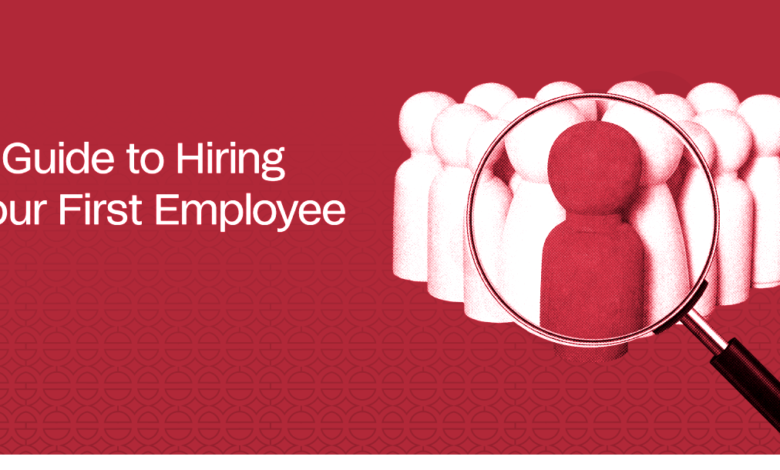13 Things You Must Know Before Hiring Your First Employee

Hiring your first employee is a significant milestone for any business. It’s a sign of growth, a need for expanded expertise, and an opportunity to share your vision with someone who can help you achieve it. However, this exciting step comes with responsibilities and complexities that should not be underestimated. In this article, we will explore the 13 key things you must know before hiring your first employee.
Understanding the Significance of Hiring Your First Employee
Before diving into the details, let’s grasp the importance of this decision. Your first employee will not only assist with the workload but also impact your company’s culture and future success. You are not just hiring a skill set; you are bringing in someone who shares your vision and can contribute to your business’s growth.
Legal Obligations and Considerations
Employment Laws and Regulations
Employment laws and regulations vary by location and the size of your business. Before hiring, familiarize yourself with the legal requirements regarding minimum wage, overtime, and employee rights in your jurisdiction. For instance, in the United States, you need to comply with the Fair Labor Standards Act (FLSA), which dictates minimum wage and overtime pay, and Title VII of the Civil Rights Act, which prohibits discrimination in employment based on race, color, religion, sex, or national origin. Different countries have their labor laws, so understanding these regulations is crucial to avoiding legal troubles.
Tax Implications
Hiring an employee involves tax obligations, such as payroll taxes and withholding taxes. Ensure you understand your tax responsibilities and consider consulting a tax professional. Payroll taxes include withholding and paying Social Security and Medicare taxes, along with federal and state income taxes, on behalf of your employees. You’ll also need to pay your share of these taxes as an employer. These tax implications can be complex, so seeking expert advice is advisable to stay compliant.
Defining Your Hiring Needs
Job Description and Responsibilities
Create a detailed job description outlining the role’s responsibilities, expectations, and qualifications. This document will serve as a guide during the recruitment process. Your job description should be precise and cover everything from the job title to the key duties, required skills, and qualifications. Be clear about the role’s purpose and how it fits into your company’s mission and objectives.
Qualifications and Skills
Determine the essential qualifications and skills required for the job. Consider both hard skills (technical skills) and soft skills (communication, teamwork, etc.). For example, if you’re hiring a software developer, you might require specific programming languages as hard skills and strong problem-solving and collaboration as soft skills. Knowing exactly what you need will help you find the right candidate who aligns with your business goals.
The Recruitment Process
Sourcing Candidates
You can source candidates through various means, including job boards, social media, and employee referrals. Develop a recruitment strategy to attract suitable candidates. Job boards like LinkedIn, Indeed, and industry-specific platforms are great places to post your job openings. Additionally, social media platforms can be useful for reaching a broader audience. Employee referrals often result in excellent hires, as your current staff can recommend individuals who they believe will be a cultural fit and competent in their roles.
Interviewing and Selection
Conduct thorough interviews to assess candidates’ qualifications, experience, and cultural fit. Select the most suitable candidate based on your defined criteria. During interviews, use a structured approach to evaluate candidates consistently. Ask open-ended questions to gauge their experience and problem-solving abilities. It’s also important to assess their alignment with your company’s values and culture to ensure they’ll be a good fit.
Onboarding and Training
Orientation and Documentation
Create an onboarding process to introduce the new employee to your company, policies, and procedures. Ensure all necessary documentation is completed. Orientation is the first step in integrating a new employee into your company. It involves introducing them to your company’s mission, values, and culture. Provide an employee handbook that covers company policies and procedures, such as work hours, dress code, and safety guidelines.
Skill Development
Invest in training and skill development to ensure the employee can perform their job effectively and adapt to your company’s culture. Training should be ongoing to keep employees’ skills up-to-date. This can include on-the-job training, workshops, and opportunities for continued education. A well-trained employee is more confident, productive, and likely to stay with your company.
Compensation and Benefits
Salary and Wages
Determine a competitive and fair salary for the position. Consider market rates, the candidate’s experience, and your budget. Research salary ranges for the specific job in your industry and location. Make sure your offer is competitive to attract the best talent. Consider the candidate’s experience and any specialized skills that might warrant a higher salary.
Benefits Packages
Offering benefits, such as health insurance or retirement plans, can make your job offer more attractive to potential employees. Benefits can significantly influence a candidate’s decision to accept a job offer. Health insurance, retirement plans, paid time off, and other benefits can enhance your overall compensation package and help you stand out as an employer.
Creating a Positive Workplace Culture
Employee Engagement
Foster a culture of engagement, collaboration, and open communication to keep employees motivated and satisfied. Employee engagement is crucial for productivity and retention. Encourage involvement in decision-making, provide opportunities for feedback, and recognize and reward achievements.
Communication
Establish clear communication channels, feedback mechanisms, and opportunities for employee input. Effective communication is the cornerstone of a positive workplace culture. Regularly check in with your employees to ensure they have the resources and support they need to thrive in their roles.
Performance Evaluation and Feedback
Setting Expectations
Set clear performance expectations from the beginning, and regularly review and discuss the employee’s progress. Performance expectations should be documented and discussed with the employee during the onboarding process. Regular evaluations, such as quarterly or annual reviews, should be conducted to provide constructive feedback and set goals for improvement.
Providing Constructive Feedback
Offer constructive feedback and recognition to help employees grow and perform at their best. Positive reinforcement and constructive criticism can motivate employees to excel in their roles. Acknowledge their achievements and guide improvement when needed.
Challenges and Pitfalls
Micromanagement
Avoid micromanaging your employees, as it can lead to frustration and decreased productivity. Micromanagement can stifle creativity, hinder autonomy, and create unnecessary stress. Trust your employees to do their jobs effectively, and offer support when they need it.
Employee Turnover
High turnover can be costly. Create a work environment that encourages retention and growth. Employee turnover is not only expensive but can disrupt productivity and harm morale. Ensure your employees are satisfied and engaged in their work to reduce turnover rates.
Growth and Expansion
As your business grows, your need for employees may also increase. Plan for expansion and consider the skills and roles required for future growth. Analyze your company’s growth trajectory and anticipate your staffing needs. Hiring for development should align with your long-term business strategy.
Conclusion
Hiring your first employee is a pivotal moment in your business journey. It brings opportunities for growth, but it also comes with responsibilities and challenges. By understanding and implementing the key considerations discussed in this article, you can navigate this important step more confidently and effectively.
FAQs
- How do I know when it’s the right time to hire my first employee?
The right time to hire your first employee is when your workload consistently exceeds what you can handle alone and when you have a clear vision for your role.
- What legal requirements do I need to consider when hiring an employee?
Legal requirements vary by location, but they typically include minimum wage, overtime, and employment rights. Consult local employment laws.
- How can I create a positive workplace culture for my first employee?
Foster engagement and open communication and provide opportunities for employee input to create a positive workplace culture.
- What are the common pitfalls to avoid when hiring the first employee?
Avoid micromanagement, which can be demotivating, and focus on creating an environment that encourages employee retention and growth.
- What are the signs that my business needs to hire more employees as it grows?
Signs include consistently high workloads, unmet demands, and a clear need for additional expertise to support your business’s expansion.










